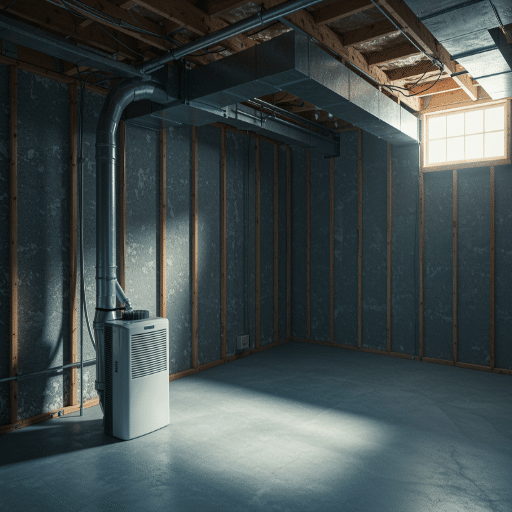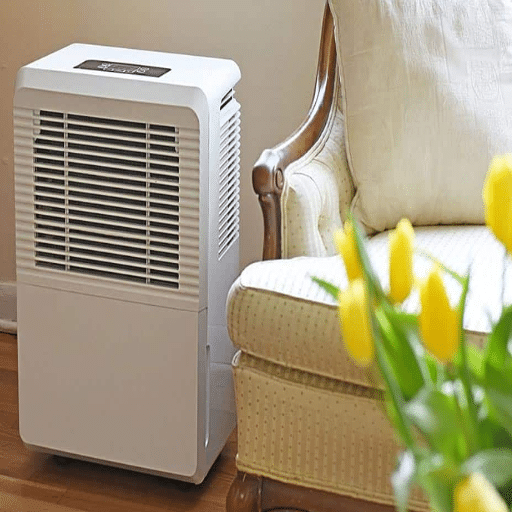It is of extreme significance that the right air character is maintained within a dwelling in terms of humidity and temperature, especially in specific regions that exhibit excessive heat. Central air conditioners and dehumidifiers are among the few, but they are the most commonly used devices to improve indoor environments. In the following article, we illustrate whether the use of dehumidifiers can assist in reducing the temperature of living spaces, how each device operates, their effects on room temperature, and their areas of maximum utility. This guide aims to determine whether a dehumidifier would benefit your home by first discussing its principles of operation and, second, its ability to improve air quality.
How Does a Dehumidifier Work?
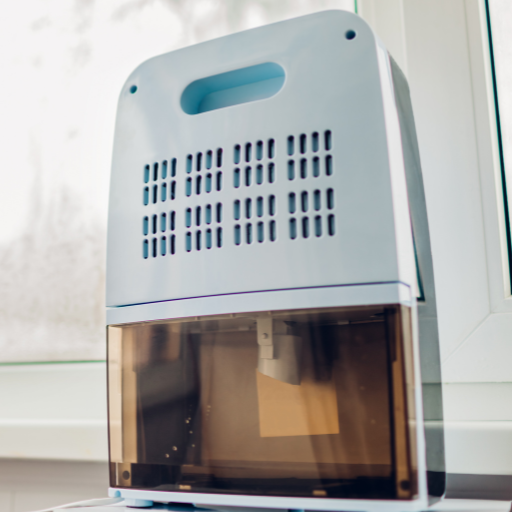
The dehumidifier works by sucking in damp air from the room and passing it through Air conditioning coils, which are placed within a refrigeration circuit. This transforms the water vapor condensation into moisture which can be gathered into a tank or drained away. Subsequently, the air is warmed and disseminated back into the area. This process lowers the humidity levels, which in turn enhances the air conditions and makes the room more comfortable.
The functioning of condensation and its relation to air temperature
At its core, when dehumidification occurs, condensation forms. The humid air comes into contact with cooled coils, and the water vapor present in the air departs the gaseous state to join the liquid phase. With the absence of moisture, the latent heat energy present in the air does alter, but the temperature of the air itself remains almost unaffected. Air-cooled by dehumidifiers tends to be felt cooler because, with diminishing humidity, the scope for sweat evaporation is enhanced – assisting temperature regulation. A measure of the effectiveness of a dehumidifier involves its nominal rating or capacity measured in pints, energy efficiency ratio, and the environmental temperature range in which the appliance operates effectively. It is important to note that Dehumidifiers do not serve as primary air cooling devices, so they do regulate temperature around the device. These devices tend to elevate the temperature slightly due to the heat expelled during usage. In some cases where humidity control paired with cooling is required, the ideal method involves using a dehumidifier combined with an air conditioner.
Dehumidification’s Effect on Perceived Premise Temperature
On the other hand, the importance of moisture removal on comfort temperature relates to how the human body thermoregulation operates. Excessive humidity makes cooling that is achieved by sweating inefficient because evaporation of sweat from skin is limited, whereas lower humidity facilitates this process and thus makes it possible for a person to perceive cooler air even when the dry bulb temperature is stagnant. Dehumidifiers do indeed achieve this by increasing comfort levels as a result of lowering air moisture content.
Some key features that dictate the above mentioned dynamics are:
- Capacity: Indicated in pints per day, this measures the humid air spaces the unit needs to condense. Larger and more humid areas will require higher capacities hence use these units.
- Energy Efficiency Ratio (EER): This parameter defines the energy used by the dehumidifier about the unit’s performance, thus higher EER values are preferred.
- Operating Temperature Range: These appliances are usually designed to operate between 41°F and 95°F to maximize efficiency, especially for those that use refrigerant-based systems.
- Fan Speed and Airflow Rate (CFM): Faster fans improve airflow and lower relative humidity by forcing air more quickly through the unit. This allows for faster dehumidification of enclosed spaces.
When mastered and optimized, these parameters can allow dehumidifiers to significantly improve room comfort, especially alongside air conditioners that manage temperature and humidity at desired levels.
A dehumidifier’s contribution to indoor humidity control
Dehumidifiers are critical to maintaining optimal indoor humidity levels ranging from 30 to 50 percent. Not maintaining these levels can lead to several issues, ranging from the growth of molds, dust mites, structural damage due to excess moisture, to respiratory discomfort and damage caused by static electricity due to dry air. Dehumidifiers minimize risk by extracting excess moisture from the room air, a process which, if not adequately managed by a device, can do more harm than good.
- Moisture Removal Rate (pints/day): This determines the device’s efficiency in generating a positive moisture balance by removing humidity relative to the room’s size and humidity state.
- Sensor Accuracy (±%RH): These parameters allow monitoring of humidity level variations, and high-quality hygrometers make it easy to check with the set levels so that the device is calibrated to work.
- CFM (Cubic Feet per Minute): Controlled air flow implements the range and rate of air circulation, which subsequently influences the space dehumidification speed.
- Drainage Options (Manual or Continuous): This determines the overflow mechanism enabling uninterrupted moisture removal during operation.
- Automatic Humidistat: This device protects preset humidity levels by automatically activating and deactivating it as necessary to save energy.
With a dehumidifier such as this, one can achieve their goals while simultaneously keeping energy usage within practical limitations. Because of the control of these parameters, a dehumidifier can work as intended.
Can a Dehumidifier Actually Lower Room Temperature?
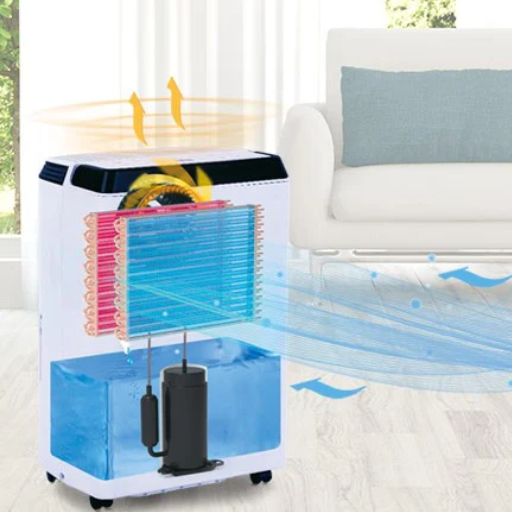
Even while a dehumidifier’s central role is air moisture extraction, it indeed impacts room temperature. As the humidity lessens, the body is allowed to utilize its natural cooling capabilities – sweating – with greater ease, allowing the air to feel more comfortable. Simultaneously, dehumidifiers may slightly increase the room’s temperature due to the internal heat generated. In the end, any changes to the temperature are quite limited, and the possible feeling of cold is mainly due to less humidity rather than a drop of air temperature.
Differences Between Cooling and Dehumidifying Effects
While dehumidifying and cooling both transform the air’s environment, each employs unique processes and techniques. Cooling is primarily done using air conditioners and lowers air temperatures by extracting heat from the room and expelling it elsewhere, frequently with the help of a refrigerant cycle. In contrast, dehumidifying has one primary focus: removing moisture from the air to manage humidity levels and preventing excess heat reduction.
Decreasing the thermal energy inside a room’s atmosphere is an essential aspect in the cooling process of a room. It has a noticeable and rapid impact on the air temperature. In this context, two key elements include the system’s cooling power, expressed in BTUs, and the energy efficiency ratio, EER. On the contrary, a dehumidifier uses coils set at a temperature lower than the air dew point to turn vapor into liquid. A device measuring a dehumidifier’s performance is expressed in pints of water per day, indicating how much vapor it can condense at a given temperature and relative humidity of 80°F and 60%, respectively.
Although a dehumidifier is more effective in influencing the comfort level of the occupants of an adequately cooled space by decreasing the moisture content of air rather than provide drastic change in temperature, a cooling system offers a more stable comfortable environment. Decreased humidity has more positive effects on the human body than just lipid metabolism. It also makes the human body sense cooler air, resulting in the person feeling comfortable without major changes being done to room’s temperature.
Why dehumidifiers might feel cooler but don’t technically cool the air
Instead of a change in air temperature, the feeling of air coming from a dehumidifier is more remarkable because of the drop in humidity levels. Evaporation of moisture from the skin is much more effective when the water vapor level in the air is lower and this helps in better heat loss from the body. This physiological effect can give the impression of cooler conditions, but in reality, the air temperature, which most of the times is gauged using thermometric methods, is found to be almost identical.
When analyzing it from a different angle, dehumidifiers draw in humid air and blow it across evaporator coils kept below the dew point. This removes nearly all of the water vapor in the air drawn in and collects it as liquid. So the amount of moisture removed, typically measured in pints per day, directly relates to the comfort level. Additionally, some of the latent heat released during condensation is temerpature neutral so the net cooling effect gets neutralized when it is dissipated into the air through condenser coils. Rating of the unit, airflow in cubic feet per minute (CFM), and operating conditions (usually set at 80°F with 60% RH) define the value of those devices in normal market of performance against all of them.
An analysis of understandness between humidity level and temperature perception
Humidity has an important role in perceived temperature due to its impact on the body’s cooling mechanisms. At high relative humidities, the evaporation of sweat is restrained, so heat loss is reduced, and the body feels warmer than it really is. Conversely, low humidity facilitates sweat evaporation with increased heat loss making the body feel cooler. This relationship demonstrates why optimal indoor humidity is usually set between 30 to 50 percent to ensure comfort and productivity.
How Dehumidifiers Affect Airflow and Room Comfort
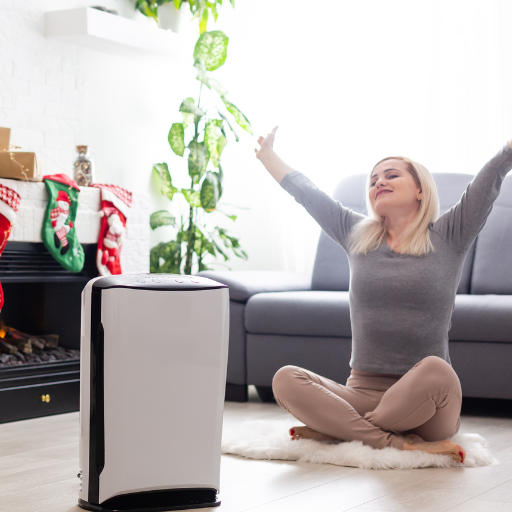
The excess moisture in the air interferes with airflow and room comfort. Dehumidifiers resolve this issue by extracting the extra moisture in the air and maintaining humidity at optimal levels. By improving air quality and extracting water vapor, dehumidifiers lower the chances of mold and allergen growth, and improve overall comfort. They also make airflow feel lighter and more refreshing and make heat exchange more efficient in the body. It helps improve circulation leading to a more comfortable environment regardless of the season.
Effects of decreased humidity on airflow
Air circulation patterns in a room can be drastically altered by lowered humidity because air is less dense. There is less weight on the air, which helps it circulate better and improves ventilation flow patterns, making dry air easier to breathe. This enhances warm or cool air conditioning, resulting in better air circulation in HVAC systems. Relative humidity is a key factor in the thermal conductivity and specific heat capacity of air. For example, dry air is less humid, which often means it has lower thermal resistance. Heavier air is slower to transfer heat, and drier air is faster. An ideal range of humidity guarantees airflow without stagnation – 30-50%. This ideal range prevents dampness-related issues while ensuring the airflow.
Dehumidifiers vs. air conditioners: which provides more comfort?
Both air conditioners and dehumidifiers provide degress of comfort in different ways. During very warm or muggy weather, air conditioners are required to boost comfort levels indoors by cooling air and removing heat and moisture. In an indoor setting, dehumidifiers serve to make the air less humid so that it is more breathable. In highly humid environments, using both systems simultaneously helps with temperature regulation, increasing indoor comfort.
The role of a dehumidifier’s airflow in temperature perception
Airflow from a dehumidifier induces significant changes to the perceived temperatures indoors. Dehumidifiers eliminate excess air moisture, which helps remove the clammy or sticky feelings often experienced during periods of elevated humidity. This means that the air feels cooler and more comfortable even in constant temperatures, as there is a reduction in the humidity level. Additionally, the air circulation, brought about by the dehumidifier, creates a moderate breeze, promoting skin evaporative cooling, thereby increasing comfort levels. This tends to be more evident where there is no free flow of air, as the discomfort due to humid stagnant air will be more intensified in such enclosed spaces.
What Are the Key Differences Between a Dehumidifier and an Air Conditioner?
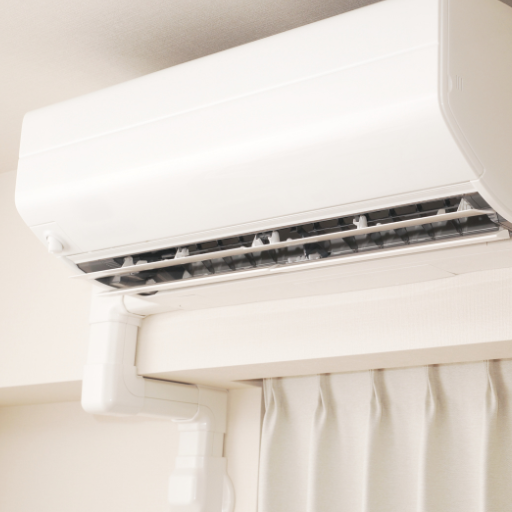
Although both dehumidifiers and air conditioning units are air management systems, they serve different functions. Dehumidifiers mainly focus on lowering indoor humidity and eliminating excessive moisture from the air. To accomplish this, the device pulls in air, passes it through a cooled coil to condense water vapor, and discharges dried air back into the room. Conversely, air conditioning units are designed to lower the temperature of indoor spaces by removing heat from the air to cool it. Although air conditioning units can reduce humidity as a tertiary function, it is not their core objective. Instead, dehumidifiers are built to work most effectively in cooler regions where air conditioning units are not needed, and air conditioners are designed specifically to cool buildings in warmer climates.
Dehumidifiers and their influence on temperature regulation
Dehumidifiers have an indirect impact on temperature control by extracting extra moisture from the surroundings which can cool the room to a more comfortable level. Great humidity levels can obstruct the natural body processes of cooling off such as sweating and evaporation, leading to a perception of the environment being hot. Dehumidifiers can maintain the desired humidity levels, which lessen the dependence on air conditioning systems, thus providing possible energy savings. It must be noted that dehumidifiers do not directly bring down air temperature, nor are they meant to replace air conditioning units in a hot environment. Rather, they improve indoor air quality and comfort in spaces with constant moisture problems.
Air conditioners: The Secrets Behind Their Functions in Cooling and Moisture Removal
The process of air conditioning includes removing heat from the air inside a room and then transferring that heat outside. In doing so, the inside temperature of the room is lowered. In the process, warm air gets blown through the evaporator coils where the air temperature drops below freezing, leading to moisture condensation on the evaporator coils. The collected moisture is drained away, and this condensation goes a long way toward lessening humidity indoors. With air conditioners, cooling and dehumidifying happen concurrently, enabling sustained temperature control while enhancing comfort indoors.
The Benefits of Using a Dehumidifier instead of an Air Conditioner
If my concerns lean more towards excessive humidity than high temperatures, I would prefer a dehumidifier. Dehumidifiers come highly recommended when one’s key issue is moisture reduction to prevent mold and enhance air quality, particularly in humid and damp places like basements. Conversely, air conditioners best serve the need to cool hot places with some effort toward counteracting humidity. Thus, when the temperature is reasonable but humidity is an issue, a dehumidifier is the more energy-efficient and practical option.
Can Using a Dehumidifier Enhance Air Conditioner Performance?
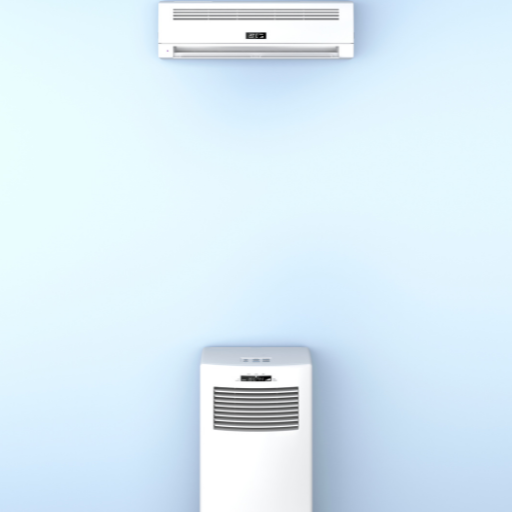
The combination of dehumidifiers and air conditioners provides an efficient cooling system and enhanced indoor comfort. As a dehumidifier works to remove moisture from the air, it aids in reducing the workload on the air conditioner, enhancing the cooling process, and lowering energy consumption. This combination is beneficial for areas with high humidity since an air conditioner by itself would struggle to keep temperatures and humidity at reasonable levels. Likewise, it can assist in increasing the air conditioner’s lifetime as it reduces strain on the system.
Explanations of why removing moisture from air enables better cooling in an air conditioning unit.
When there is excess humidity in the air, an air conditioning unit has to deal with one of the major challenges of thermal comfort, making the whole process quite more complex. When humidity is at its peak, the air tends to have a much warmer feel to it – Making the body’s cooling mechanism, evaporation of sweat, to be much less effective. A system incorporating a dehumidifier or an air conditioner that can cool to relatively lower humidity levels would focus more on reducing temperature and limiting moisture. This makes the entire cooling process more efficient with minimal energy usage, making it more comfortable for the occupants.
Energy efficiency: Ways how dehumidifiers help lower cooling costs
In places where residents use a dehumidifier, they find out that the cooling expenses are lower since the atmosphere is less humid. This means it is easier to cool the air, reducing the demand for the air conditioning system and potentially increasing its lifespan. Energy costs will subsequently be lower. Furthermore, dehumidifiers maintain the humidity level at a reasonable setting where the cooling systems will not be overworked so the air conditioning units will be more efficient in managing the indoor environment.
Addressing comfort in humid conditions with the aid of both systems
Integrating a dehumidifier into an air conditioning system brings hope when seeking refuge from humid conditions. The dehumidifier will perform the bulk of the work by eliminating excess moisture, making the air feel sticky and hot. This means that the air conditioner will only regulate the room’s air temperature and not the humidity, thus reducing the energy consumed while cooling the room faster and more consistently. With these systems in place, the indoor environment is optimally maintained which means a healthy and comfortable room as well as improved air quality.
When Should You Use a Dehumidifier Instead of a Fan or Air Conditioner?

If your main problem is humidity rather than heat, a dehumidifier works much better than a fan or an air conditioner. Suppose your home’s interior climate is humid and musty, and there is excessive condensation on the windows or walls. In that case, a dehumidifier is a practical appliance that removes extra moisture in the air. This helps to stop mold from developing, protects wooden structures and furniture from damage and diminishes allergens like dust mites. Dehumidifiers solve moisture problems directly, unlike fans, which simply blow air around the room and air conditioners do aid in air circulation but mainly work by lowering the temperature. Dehumidifiers work wonders in places such as high humidity areas, basements, or bathrooms because they help to create a healthier environment.
Depicting when humidity is the major issue
Some specific indicators and measurements enable high humidity to be identified. The presence of condensation on the walls and windows, a musty odor that indicates mold growth, and a damp, sticky feeling are a few signs that enable you to identify the problem of high humidity. Such problems arise when the relative humidity ranges from 50-60%. A hygrometer is advisable to obtain an accurate reading of the humidity level, as a reading higher than this range signals an issue that needs to be addressed.
Additionally, high humidity levels can contribute to feeling unwell, worsening asthma due to the increase in allergens, and causing damage to structures like wood’s expansion or deformation. Areas such as basements or bathrooms with inadequate ventilation are especially vulnerable to these issues. Such problems can be solved by using a dehumidifier, which reduces relative humidity and therefore allows people to feel comfortable. According to the EPA, the normal range of relative is between 30 to 50 percent, which greatly minimizes the chances of damage to one’s health and moisture concerns. Always Ensure this range is sustained to guarantee an improvement in air quality and reduce the chances of moisture-related harm or health issues.
The benefits of using a dehumidifier in a damp, muggy room
Removing the additional moisture from the air in a damp and warm room is a good way to solve many problems by using a dehumidifier. One of the most notable positives is the cessation of mold and mildew that flourishes in humid places, leading to damage to the structure and medical attention for health issues such as allergies and respiratory infections. A dehumidifier also serves for the wellbeing of people who occupy the building because it ensures the relative humidity is always within 30-50 percent.
On top of that, a dehumidifier helps improve the comfort level in the house, making the air less sticky and dense. This is especially important during the summers when the air is highly moist and even air conditioning cannot make one comfortable. Most models come with adjustable humidistats or even built-in hygrometers that allow the user to control the humidity level. Moreover, some units are equipped with an auto restart feature, which allows one to relax after a power failure because they will turn on a few seconds after electricity resumes. These devices with energy efficiency certifications, such as the ENERGY STAR rating, can be kept on for a long time without significantly increasing electricity costs.
Furthermore, reducing humidity may also increase the longevity of some household wooden furniture, electronics, or flooring that can be easily damaged. They also enhance the air circulation in the room, which helps the air conditioning or heating system work better and saves energy. All these advantages, along with their ease of use, flexibility, and energy efficiency, make dehumidifiers cost-effective gadgets for ensuring healthy living conditions.
Is it prudent to integrate air conditioning with dehumidification functions for maximized comfort?
Combining dehumidification with cooling devices can significantly enhance comfort. How? Dehumidification removes superfluous moisture content from the air and eliminates the sticky and stagnant feeling associated with humid and warm conditions. More importantly, it enables the cooling system to concentrate solely on cooling the air rather than controlling the humidity level, which leads to increased energy efficiency and reduced operational costs. The interplay of these systems ensures that the indoor environment is correctly regulated for optimal air quality and comfort.
Reference sources
Frequently Asked Questions (FAQs)
Q: Can a dehumidifier cool a room?
A: While a dehumidifier doesn’t directly cool a room, it can make the space feel more comfortable by removing moisture from the air. This can make the air feel less “heavy” and reduce the perceived temperature, especially in humid environments. However, it’s important to note that dehumidifiers actually add a small amount of heat to the room as they operate.
Q: How does a dehumidifier affect the temperature in a space?
A: A dehumidifier can help make a room feel cooler by removing excess moisture from the air. However, the device itself generates a small amount of heat during operation. The net effect is often a more comfortable environment, as the reduction in humidity can make the air feel less oppressive, even if the actual temperature doesn’t decrease significantly.
Q: Can I use a dehumidifier instead of an air conditioning unit?
A: While a dehumidifier can improve comfort by reducing humidity, it cannot replace an air conditioning unit for cooling. Air conditioners actively cool the air, whereas dehumidifiers primarily remove moisture. In very humid environments, using a dehumidifier alongside an AC can help the AC work more efficiently, as it won’t have to work as hard to remove moisture from the air.
Q: How does humidity affect how we perceive temperature?
A: High humidity can make a room feel warmer than it actually is because it prevents sweat from evaporating efficiently from our skin. This is why a dehumidifier can help you feel more comfortable – by reducing humidity, it allows for better evaporation, which is our body’s natural cooling mechanism. Lower humidity means your air feels less “heavy” and more comfortable.
Q: Can a dehumidifier cool an entire house?
A: A single dehumidifier typically can’t cool an entire house effectively. While it can help reduce humidity in a specific area, its effects are usually limited to the room or space where it’s located. For whole-house dehumidification, you might need multiple units or a central dehumidification system integrated with your HVAC.
Q: Is it okay to use a humidifier and dehumidifier at the same time?
A: It’s generally not recommended to use a humidifier and dehumidifier at the same time in the same space. These devices have opposing functions – one adds moisture to the air while the other removes it. Using both simultaneously would be counterproductive and waste energy. Instead, assess your home’s humidity levels and use the appropriate device as needed.
Q: How does a dehumidifier work to remove moisture from the air?
A: A dehumidifier works by drawing air over a coil that’s cooled to below the dew point. This causes moisture in the air to condense on the coil. The water droplets are then collected in a tank or drained away. Some dehumidifiers use an absorbent material instead of a cooling coil to remove moisture. The now drier air is then released back into the room, reducing overall humidity.
Q: Can using a dehumidifier help during heat warnings?
A: During heat warnings, a dehumidifier can be beneficial, especially if humidity is also high. By reducing moisture in the air, a dehumidifier can make the environment feel more comfortable and help your body’s natural cooling processes work more effectively. However, it’s important to remember that dehumidifiers do generate some heat, so they should be used in conjunction with other cooling methods during extreme heat events.


